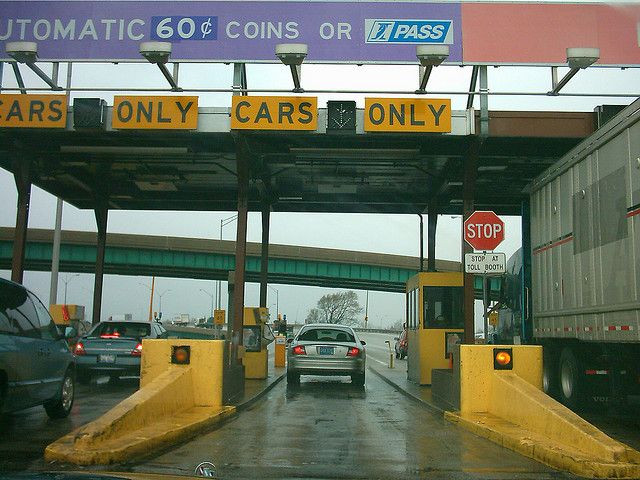E-ZPass May Be Saving Premature Birth From Ever Happening: Does An Auto-Centric World Harm Or Help?

Each day, as the air grows thicker and darker, we breathe in a dizzying collection of pollutants — from factories and machinery, vehicles, and animals. The lifelong risks spurred on by air pollution are numerous, and recent research offers a curious side-effect of reducing our footprint, even if it’s only for minutes at a time.
E-ZPass, it turns out — the speed-through lane used to traverse bridges and tunnel underground, without stopping to pay a toll — could be reducing the risk of premature birth. What may seem like a negligible amount of time spent idling in traffic is potentially costing nearby families millions of dollars in future expenses, according to a study conducted by two Columbia University economists, Janet Currie and Reed Walker.
Premature birth is a complex problem fraught with deep implications. Over the last 25 years, premature birth rates have increased by 36 percent. And according to data from the March of Dimes, it is the leading cause of death among newborns, whose still-developing bodies are ill-equipped to handle the rigors of life.
The most science knows about why a woman is more likely to give birth too early is that multiple environmental, genetic, and personal factors could be at play. It knows, for instance, that drinking and smoking during pregnancy ups a woman’s risk to delivery prematurely. But it also posits that obesity, weight loss surgery, low or high maternal age, infection, carrying more than one baby, high blood pressure, late prenatal care, and stress also play a role. Clearly, expectant mothers have a lot to think about. Air pollution is only one consideration.
It may be an important one, however. In their study, Currie and Walker found that women who lived near a toll plaza before E-ZPass showed markedly higher rates of premature birth and low birth weight than women who moved to the area after E-ZPass was introduced — a 6.7 to 9.16 percent reduction for premature birth and 8.5 to 11.3 percent for low birth weight. This was irrespective of demographic changes in that time, the team asserts.
The reason for the change is straightforward. Cars that pass quickly through the toll aren’t forced to wait in lines before reaching the booth. This means they don’t spend several minutes sitting with their motor running, spewing gas out of their tailpipe, to collect in the surrounding air. Especially during rush hour, when people commute between states, congestion can clog up roadways.
“Our results suggest that policies intended to curb traffic congestion can have significant health benefits for local populations in addition to the more often cited benefits in terms of reducing travel costs,” the researchers wrote.
Admittedly, unless intervening efforts are made the problem will only get worse. Over the next 25 years, experts believe peak-period congestion delays will increase by 250 percent. What’s more, a 2009 study of 439 urban areas found congestion costs roughly $87.2 billion in terms of wasted time and fuel.
While cars and trucks are necessary for personal and commercial use, effective use of public transportation and public highway designs may be underutilized. One solution in some parts of the world has been to enact a system of “congestion pricing.” Under this system, the most-heavily trafficked roads require a toll to use at peak hours, the idea being that people who need them most will pay for it and those who can take alternate routes will stay away.
The same number of cars are still on the road; however, they are spending less time overall, which produces fewer emissions that pollute the air. Currie and Walker suggest from their study that nationwide reductions in congestion could ultimately reduce preterm births by as many as 8,600 annually, or $444 million per year. The value of the lives saved, however, is incalculable.
Source: Currie J, Walker R. Traffic Congestion and Infant Health: Evidence From E-ZPass. NBER. 2014.
Published by Medicaldaily.com



























